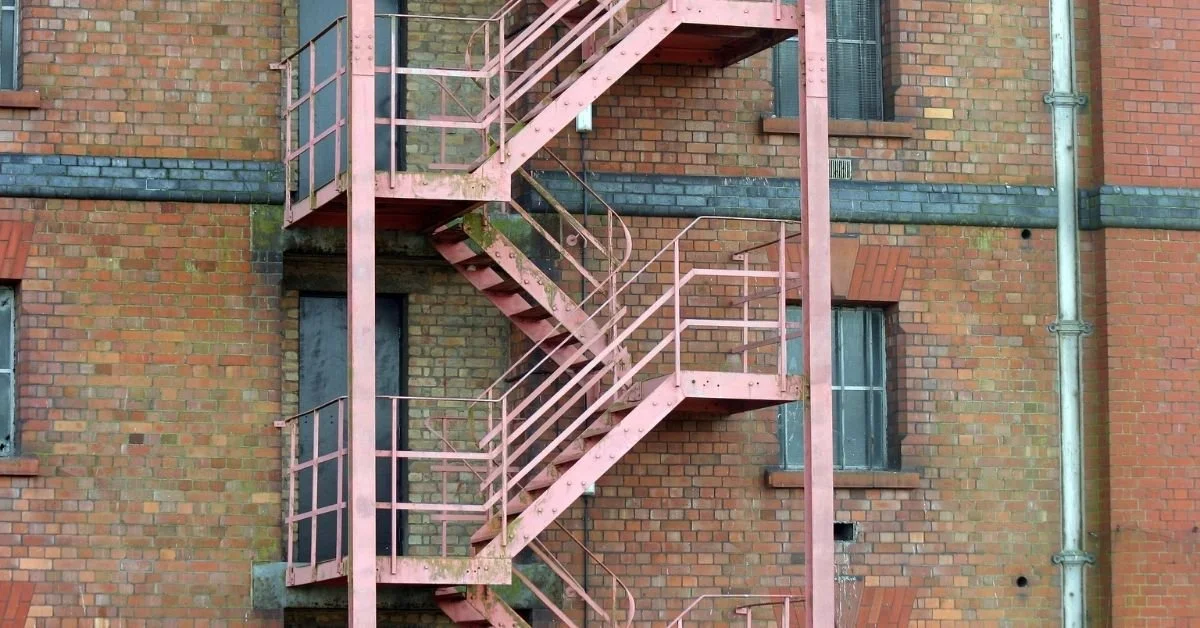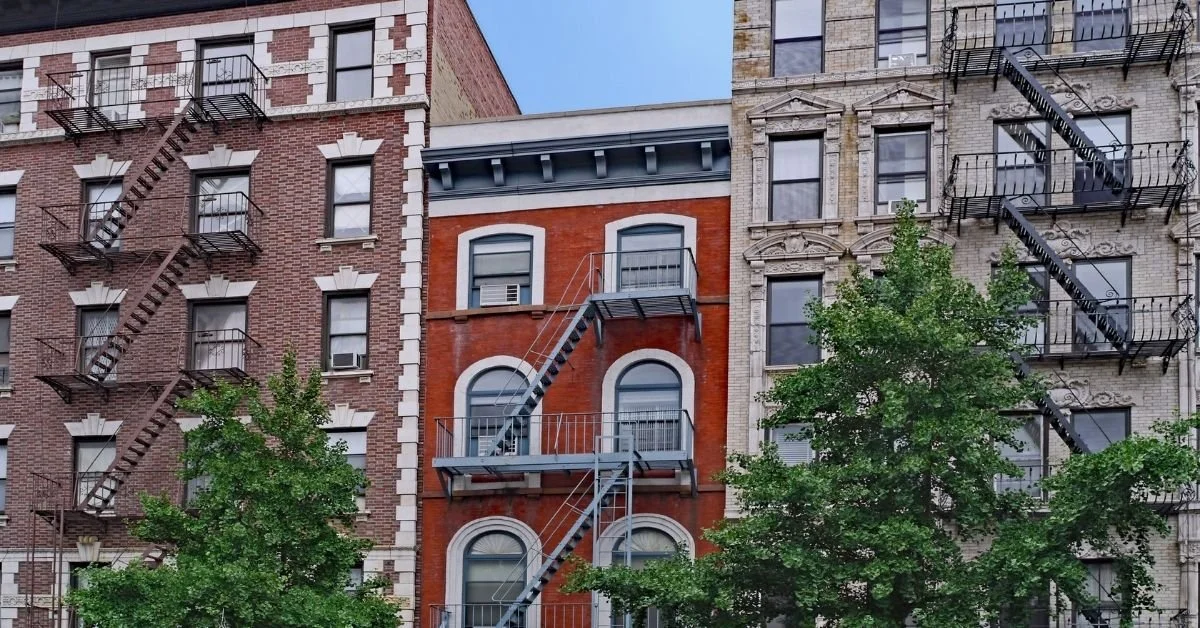Fire Escape Myths That Put Building Owners at Risk
Fire escapes have protected building occupants for over a century, yet dangerous misconceptions persist about their maintenance, inspections, and legal requirements. These myths can expose property owners to serious liability, put lives at risk, and result in costly violations.
Many building owners operate under outdated assumptions about fire escape regulations. These misconceptions create significant legal and safety vulnerabilities that can have devastating consequences.
The reality is that fire escape regulations are complex and evolving. Building owners who fail to separate fact from fiction may find themselves facing hefty fines, legal action, or worse—a tragedy that could have been prevented with proper maintenance and compliance. Understanding the truth behind the following fire escape myths that put building owners at risk can help you manage your building as responsibly as possible.
Myth 1: Grandfathered Buildings Don’t Need Modern Compliance
One of the most dangerous misconceptions is that older buildings with existing fire escapes are “grandfathered in” and exempt from current safety codes. While some older structures may not be required to meet every aspect of new construction codes, this doesn’t mean building owners can ignore maintenance requirements or safety standards.
Building codes typically distinguish between existing structures and new construction, but this distinction rarely exempts owners from basic safety obligations. Most jurisdictions require that existing fire escapes remain in safe, functional condition regardless of their installation period. When significant renovations occur, authorities often require updates to current code standards.
Older Buildings Must Also Comply With Certain Standards
The “grandfathering” concept becomes particularly problematic when building owners assume they can defer maintenance indefinitely. Fire escapes that were compliant when installed can quickly become hazardous without proper upkeep. Rust, structural deterioration, and blocked access routes can render even code-compliant installations useless during emergencies.
Property owners should consult with local building departments and qualified professionals to understand their obligations. What may appear to be a grandfather clause could be a temporary allowance with strict maintenance requirements attached.
Myth 2: Visual Inspections Are Sufficient
Many building owners believe that a quick visual check from ground level constitutes an adequate fire escape inspection. This approach misses critical structural issues only detectable through close examination and professional assessment.
Fire escapes are complex structural systems with multiple failure points. Connections between platforms and building walls, bolt integrity, railing stability, and stair tread conditions (among other aspects) all require hands-on inspection. Surface rust may indicate deeper structural problems, while hidden corrosion or metal fatigue could compromise seemingly solid connections.
Maximize Safety With Comprehensive Inspections
Professional inspections typically involve nondestructive testing methods and detailed examination of all structural components. Certified welders experienced in fire escape inspection services, such as our qualified team members at Maximum Fire Escapes, can identify problems that aren’t visible from street level. Maximum Fire Escapes can identify weak spots that untrained eyes may miss, such as loose bolts, cracked welds, or deteriorating anchor points that could cause catastrophic failure during use.
Some places, such as New Jersey, require certifications from licensed structural engineers. Building owners who rely solely on casual visual checks may miss inspection deadlines and fail to identify serious safety hazards.
Myth 3: Fire Escapes Are Just Historic Decorations
Some property owners, particularly those managing historic buildings, view fire escapes primarily as architectural features rather than functional safety systems. This perspective can lead to neglect of essential maintenance and inappropriate modifications that compromise safety.
Historic fire escapes serve as emergency egress systems, not just decorative elements. While fire escapes may contribute to a building’s character, their primary function remains unchanged. Treating fire escapes as mere ornamentation can result in dangerous conditions when emergency evacuation becomes necessary.
Modifications made only for aesthetic purposes can create serious safety hazards; this includes the following:
Painting over structural elements without proper preparation
Installing decorative coverings that hide structural problems
Modifying platforms for other uses
These changes may also violate local building codes and historic preservation requirements. Building owners should collaborate with professionals who understand structural safety requirements and historic preservation standards. Many jurisdictions have guidelines for maintaining historic fire escapes that balance safety with preservation.
Myth 4: Fire Escape Violations Are Minor Issues
Another fire escape myth that can put building owners at risk is that fire escape violations are just minor administrative matters they can address with minimal effort and expense. This attitude can lead to grave consequences when violations indicate genuine safety hazards or patterns of neglect.
Fire escape violations often reflect underlying structural problems, blocked egress routes, or failure to maintain emergency access. These issues directly impact occupant safety during emergencies.
Address All Violations Appropriately
Building departments take fire escape violations seriously because they understand the life-safety implications of compromised emergency egress systems. Penalties for fire escape violations can be substantial, including daily fines that accumulate until corrected.
In some districts, serious violations can result in occupancy restrictions or building closure orders. Beyond financial penalties, violations can create liability exposure if accidents occur on poorly maintained fire escapes.
Property owners should address fire escape violations promptly and thoroughly. Working with qualified professionals to develop comprehensive correction plans can demonstrate good-faith compliance efforts and prevent recurring violations.
Myth 5: Any Contractor Can Repair Fire Escapes
Fire escape maintenance and repair requires specialized knowledge of structural engineering, building codes, and safety standards. Not all contractors have the expertise needed to accurately assess and repair these systems.
Fire escapes are load-bearing structures that must support multiple occupants during emergency evacuations. Repairs must maintain structural integrity while complying with current safety codes. Improper repairs can create dangerous conditions that may not be apparent until emergency use reveals structural failures.
Expertly Rendered Repairs Are Best
Qualified fire escape professionals, like Maximum Fire Escapes’ team of welders, understand the requirements for materials, connection methods, and load capacities. Experts can identify when repairs are adequate and when complete replacement is necessary.
Building owners should verify contractor qualifications, licensing, and insurance before authorizing fire escape work. References from similar projects and familiarity with local building codes are important considerations.
Protect Your Investment and Your Tenants
Responsible building ownership demands an accurate understanding of fire escape obligations and a commitment to proper maintenance.
Property owners should establish relationships with qualified professionals who can provide accurate information about local requirements and proper maintenance practices. Regular professional inspections, prompt attention to violations, and proactive maintenance prevent small problems from becoming major safety hazards.
The cost of proper fire escape maintenance is modest compared to the potential consequences of neglect. Building owners who invest in professional guidance and quality maintenance protect their tenants, their properties, and their liability exposure while meeting their legal obligations.



